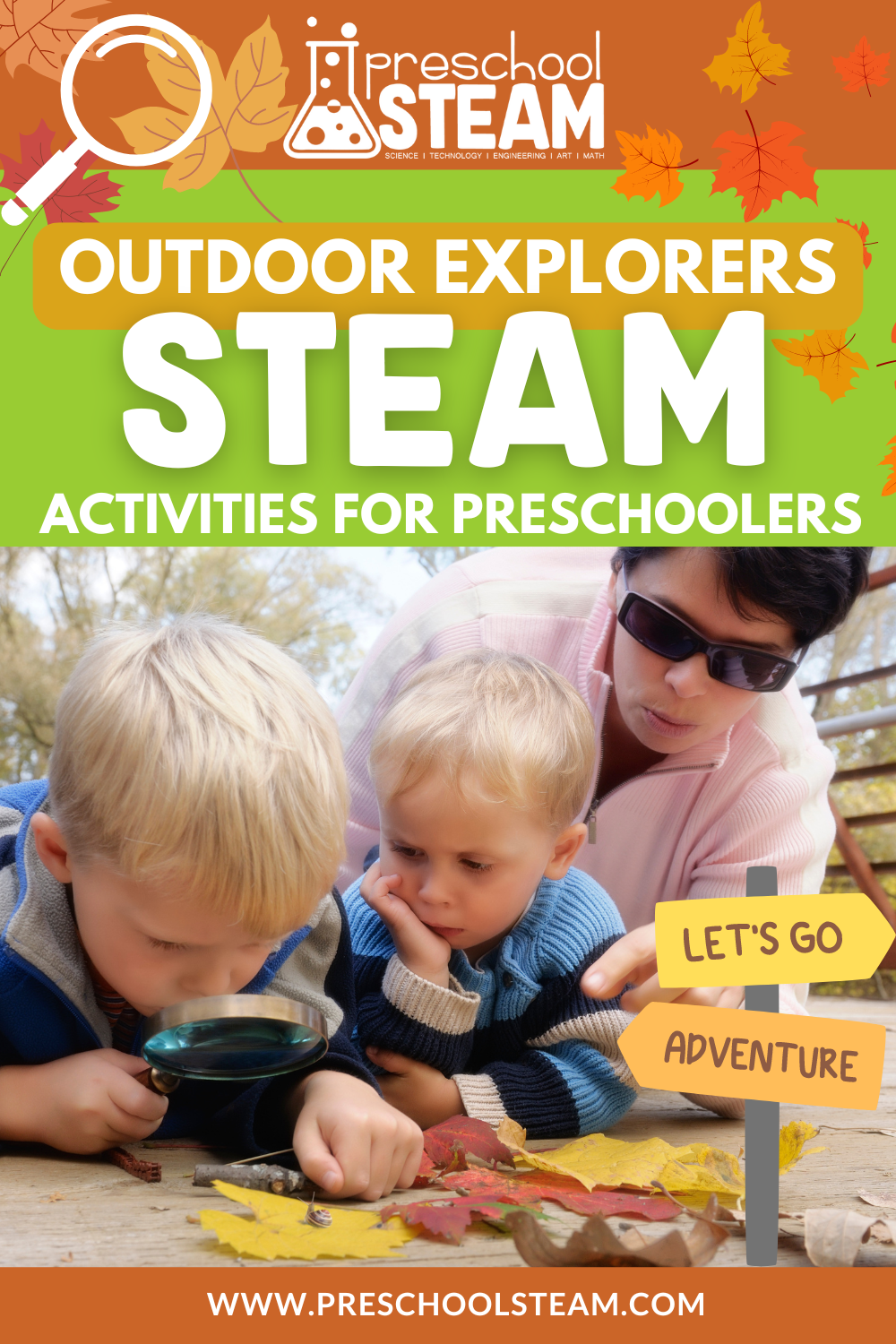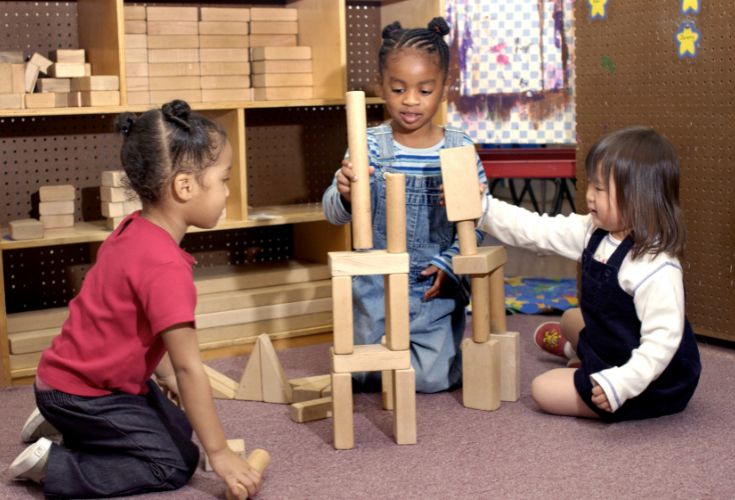As the crisp air of fall rolls in, there’s no better time to take STEAM learning outside and allow young children to explore the natural world around them. Outdoor exploration provides endless opportunities for discovery, creativity, and hands-on learning that cannot always be replicated inside the classroom. In this post, we’ll explore why outdoor learning is a powerful tool for engaging preschoolers in STEAM activities, and how you can encourage them to become “Outdoor Explorers” without giving away the specific activities in our 5-Star and Quick STEAM guides.
The Benefits of Outdoor STEAM Learning
Nature itself is one of the best classrooms for young learners. It offers a sensory-rich environment where children can observe, experiment, and ask questions about the world around them. Outdoor learning engages preschoolers on multiple levels, helping them develop key skills across STEAM subjects in a holistic way.
Here are a few key benefits of outdoor STEAM learning:
- Fostering Curiosity and Observation Skills
Nature is full of mysteries waiting to be discovered. Whether children are watching a squirrel gather acorns or observing the patterns in fallen leaves, being outside encourages them to ask questions and make observations. This natural curiosity is the foundation of scientific inquiry and STEAM learning. - Incorporating Hands-On Exploration
The outdoors provides countless materials for exploration—rocks, sticks, leaves, dirt, and more. These materials invite children to engage in hands-on activities that deepen their understanding of concepts like texture, weight, and balance. For example, exploring different types of leaves can lead to discussions about classification and patterns in nature. - Supporting Physical and Cognitive Development
Outdoor STEAM activities often involve physical movement, whether it’s running, jumping, or climbing. This physical engagement supports gross motor development while simultaneously activating the brain for problem-solving and creative thinking. Activities like building with natural materials or experimenting with water and sand promote both physical and cognitive growth. - Encouraging Risk-Taking and Problem-Solving
The outdoors presents challenges that help children build resilience and develop problem-solving skills. Whether they’re figuring out how to cross a stream, balance on a log, or build a stable structure with sticks, outdoor exploration encourages children to take risks, make mistakes, and find solutions—key elements of STEAM education.
How to Start Outdoor STEAM Exploration
Outdoor STEAM learning doesn’t have to be complicated or require elaborate preparation. It’s often as simple as stepping outside and encouraging children to notice, explore, and engage with the environment around them.
Start by allowing children to lead the way in their outdoor explorations. Take a walk and let them point out what interests them—whether it’s a bug on the sidewalk, a collection of pinecones, or the way the wind rustles the leaves in the trees. Encourage them to ask questions about what they see, hear, and feel.
As an educator, you can guide their learning by asking open-ended questions that spark deeper thinking, such as:
- “Why do you think the leaves are falling from the trees?”
- “What do you notice about the different shapes of the rocks you found?”
- “How do you think the birds find food in the fall?”
These questions encourage children to think critically and explore the world through a scientific lens.
Incorporating STEAM Concepts Naturally
The best part of outdoor learning is that STEAM concepts are all around us. Science is in the changing weather, the life cycles of plants and animals, and the properties of natural materials. Technology is found in the ways animals adapt to their environments. Engineering can be seen in the structures we build with sticks and rocks, and math comes to life in the patterns we observe in nature. Art is inspired by the colors, shapes, and textures we find outdoors.
For example, you might encourage children to collect different types of leaves and observe the veins and patterns on each one. This activity ties into science (classification and observation), math (sorting and patterns), and even art (using leaves for rubbings or prints).
Creating Reflective Opportunities
After your outdoor exploration, give your students the opportunity to reflect on what they experienced. This could be done through discussion, drawing, or journaling. Reflection helps solidify their learning and allows them to express what they discovered during their outdoor adventure.
For example, after a nature walk, ask your students to draw a picture of their favorite discovery or share one thing they learned about the outdoors. This reflective practice deepens their connection to the material and helps them remember what they’ve learned.
Conclusion: Bringing STEAM to Life Through Outdoor Exploration
Taking STEAM learning outdoors allows children to connect with the world in new and exciting ways. It fosters curiosity, critical thinking, and problem-solving while supporting their physical and cognitive development. The beauty of outdoor learning is that it feels like an adventure to preschoolers while simultaneously helping them develop key skills for the future.
As the leaves begin to fall and the seasons change, there’s no better time to encourage your students to become Outdoor Explorers. Give them the freedom to ask questions, investigate their surroundings, and discover the wonders of the natural world—and watch as they develop a deeper love for learning through STEAM.
Outdoor Explorers: Discovering the Spooky Side of STEAM Learning This Fall
As fall rolls in and Halloween approaches, there’s a touch of magic—and a little spookiness—in the air. It’s the perfect time to take STEAM learning outside and let young children explore the natural world around them, but with a fun, Halloween-inspired twist. Outdoor exploration during this season provides endless opportunities for discovery, creativity, and hands-on learning that tie into the holiday spirit. In this post, we’ll explore how to turn your preschoolers into “Outdoor Explorers” with a spooky spin, all while keeping the learning engaging and aligned with STEAM principles—without giving away the specific activities in our 5-Star and Quick STEAM guides.


Leave a Reply